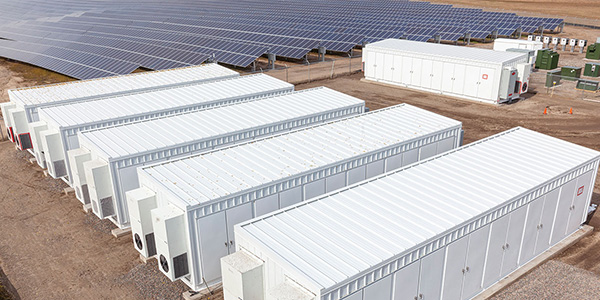By Amanda Durish Cook
CARMEL, Ind. — MISO will allow energy storage to compete against all types of transmission projects, scrapping an earlier condition that it initially only be accepted as an alternative to transmission reliability projects.
Under MISO’s first storage as a transmission asset (SATA) proposal, which the RTO hopes to file in June, storage projects could compete against all classes of transmission: baseline reliability projects, market efficiency projects, multi-value portfolios, generator interconnection projects and market participant-funded upgrades.
MISO, which proposed in January that storage only be considered for system reliability purposes, changed its thinking in response to stakeholder urging and a realization that the broader uses wouldn’t require it to alter its transmission selection process. (See MISO Moving Quickly on Initial SATA Rules.)
In all project cases, MISO will have functional control over the SATA, and such assets will not have to enter the RTO’s generator interconnection queue. The proposal will leave MISO’s current annual Transmission Expansion Plan processes, transmission classification and transmission cost allocation rules unchanged.
MISO’s revised plan still prevents storage functioning as transmission from simultaneously participating in the energy markets.
Director of Planning Jeff Webb said the rules are intentionally limited in scope to allow for a quick preliminary filing in time to allow storage projects a chance to compete in MTEP 19. MISO officials acknowledge the timeline is ambitious.
“We still think between now and June, we’ll have enough to make a filing. We may not have every implementation detail in the planning realm worked out, but that’s okay because we need to experience it,” Webb told stakeholders at the Feb. 13 Planning Advisory Committee meeting. “Either we talk about this forever, or we get our feet wet and have to make some changes later. We certainly want to allow these devices to provide the value that they’re capable of.”
MISO said its limited proposal will allow consideration of storage in the MTEP planning process “sooner than it will take to resolve more complex policy decisions for assets providing both transmission and market services.”
“We still have concerns about when a battery discharges if that discharge is not implemented in the unit dispatch system. But we don’t think the usage of batteries will create a lot of energy balance concerns,” Webb said.
Non-TO-owned SATA?
DTE Energy took issue with MISO’s proposal, saying it limits opportunities for nonincumbents because only transmission owners are eligible for cost recovery for providing reliability services. “All market participants should be able to deploy storage assets for the purpose of providing reliability services,” DTE said. The company argued that all storage — regardless of ownership — should be able to compete on a level playing field for MTEP approval.
DTE’s Nick Griffin said non-TOs still face the interconnection queue as their only option when connecting a storage device to the transmission system.
“The queue is backlogged; at best it’s still a 500-day process,” Griffin said.
“I would hate for this proposal to be a barrier to projects trying to take off in the footprint,” agreed Cleco Cajun’s Tia Elliott.
Webb said though the conversation was “worthy” and could resurface, allowing non-TOs to provide transmission services raises complicated cost-recovery questions. Such storage owners would not be covered by TO rate schedules and would need an entirely new method of cost recovery.
“I think that’s not a three-month discussion. This is bit of a can of worms,” Webb said, referencing MISO’s June filing goal. He said if the RTO tried to work non-transmission alternatives into its first SATA filing, it could not meet MTEP 19 deadlines. It begins reviewing MTEP analyses in April and produces a draft report of projects in September.
Ameren’s Dennis Kramer agreed that creating a unique cost recovery for storage owned by non-TOs would take several months. He pointed out that MISO’s upcoming cost allocation filing took two years of discussions and negotiations.
SATA-only Planning
For planning studies, MISO Senior Manager of Expansion Planning Edin Habibovic said the RTO would look at the specific need that SATA proposes to solve and test that against traditional wires to see if it’s the most “effective and economical” solution.
For the MTEP, MISO has proposed transmission-only SATA be “modeled in the discharge (or charge) status necessary to resolve the identified transmission issue at specified critical system conditions, consistent with the facility design capabilities.” The RTO said its models will also test the ability of the system to “absorb the corresponding charge (and discharge) at other non-critical system condition periods.”
For interconnection studies, MISO has proposed that modeling of SATA will be “flexible from study to study” but always fashioned so that the asset is measured by how effectively it can minimize transmission upgrades.
“We’re not changing the planning processes — [it’s still] whether these can meet a goal or not,” Webb said.
MISO has asked that suggestions on its planning evaluation approach be filed by the end of February.





